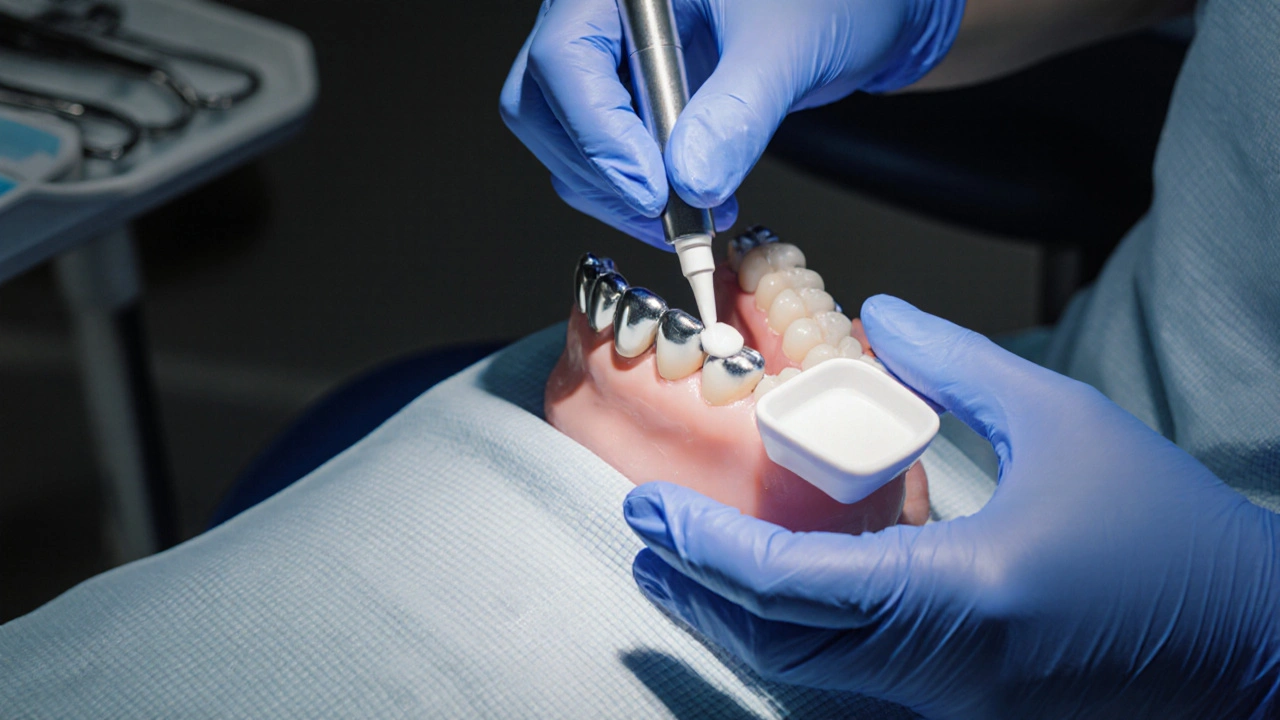- Alternativy k mezizubním kartáčkům: Efektivní ústní hygiena Apr 21, 2024
- Význam snů o vypadávání vlasů: Co nám tělo snaží sdělit? Mar 3, 2024
- Zubní implantáty: Jaké jsou rizika a vedlejší účinky? Dec 14, 2025
- Jak se vyhnout mezizubnímu kazu: Odborné rady a doporučení Feb 25, 2024
- Sonický kartáček: Jak dosáhnout profesionálního čištění zubů doma Oct 7, 2025
Zubní cement – praktický průvodce pro pacienty i zubaře
When working with zubní cement, je speciální materiál určený k trvalému spojení protetických částí s přirozeným zubem. Also known as ciment dentální, it creates a durable bond that resists chewing forces. In the same context, zubní korunka, je umělá náhrada překrývající poškozený zub often relies on cement for stability. Another essential component is adhesivní cement, typ cementu s vysokou přilnavostí, vhodný pro estetické a funkční opravy, which enhances retention of restorations.
Why does zubní cement matter? Because without a proper bond, a crown or inlay can loosen, leading to discomfort or decay. The cement’s role is to fill microscopic gaps, distribute stress evenly, and seal the interface against bacteria. This makes the choice of cement as important as the choice of the restoration itself. For example, a glass ionomer cement offers fluoride release, helping prevent secondary caries, while a resin cement provides superior aesthetic results for visible teeth.
Typy zubního cementu a jejich vlastnosti
There are four main categories you’ll meet in a dental office. First, zink‑fosforečný cement is inexpensive and easy to use, ideal for temporary fixes. Second, glass ionomer combines decent strength with fluoride release, useful for patients prone to cavities. Third, resinový cement delivers the highest bond strength and is the go‑to choice for all‑ceramic crowns and veneers. Fourth, polycarboxylátový cement offers good durability and is often used for metal‑ceramic restorations. Each type has specific indications, so the dentist evaluates the tooth condition, location, and aesthetic demand before selecting the right one.
Choosing the right cement also depends on the tooth preparation. A clean, moisture‑free surface improves adhesion, especially for resin cements that are sensitive to saliva and blood. Some dentists apply a bonding agent before the cement to enhance the connection. Others prefer self‑etching cements that simplify the procedure by combining etching and priming steps.
Another factor is the expected lifespan of the restoration. For short‑term solutions, such as a provisional crown, a zinc‑phosphate or temporary resin cement works well and can be easily removed later. For permanent restorations, especially in the front zone, a resin cement with color matching ensures the final result looks natural and stays in place for years.
The handling characteristics also influence the dentist’s workflow. Some cements are mixed manually, while others come in ready‑to‑use capsules that reduce mixing errors. Fast‑setting cements can shorten chair‑time, but they require precise timing to avoid premature setting before placement.
Beyond the technical side, patient comfort matters. Certain cements can cause post‑operative sensitivity if the bonding agent penetrates dentin too deeply. Using a desensitizing liner or selecting a cement with a milder acidity can prevent that issue.
In practice, the dentist will often explain the cement choice during the treatment plan discussion. Knowing the basics helps patients ask informed questions and understand why a particular material is recommended for their case.
What about maintenance? Once the cement has set, proper oral hygiene remains crucial. Regular brushing, flossing, and professional cleanings keep the margin between the cement and tooth free of plaque. If a crown begins to feel loose, it’s a sign that the cement bond may be failing, and a prompt dental visit can prevent more serious damage.
Finally, advancements in dental materials continue to improve cement performance. New hybrid cements combine the fluoride benefits of glass ionomer with the strength of resin, offering a versatile solution for many situations. Staying updated with these innovations ensures both dentists and patients benefit from the best possible outcomes.
Below you’ll find a curated selection of articles that dive deeper into specific aspects of zubního cementu, from choosing the right type for crowns and veneers to tips for keeping your restorations long‑lasting. Explore the collection to get practical advice you can apply right away.
Jak správně přilepit zubní korunku - tipy a výběr cementu
- Veronika Skalická
- Oct 2, 2025
Praktický průvodce, jak vybrat a aplikovat správný zubní cement pro dočasné i trvalé přilepení zubní korunky, včetně kroků, tipů a FAQ.
